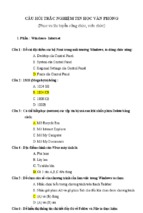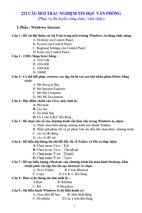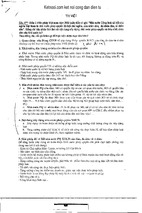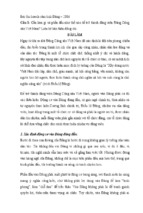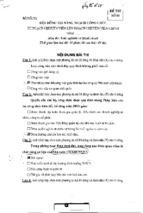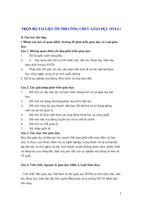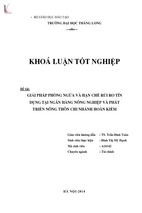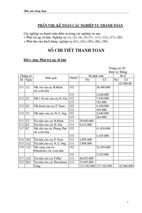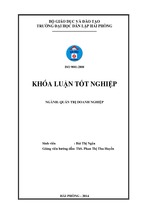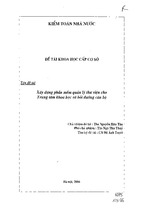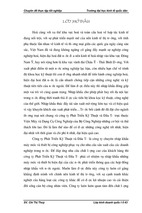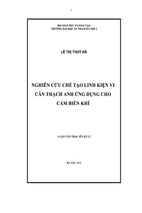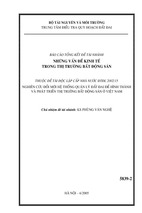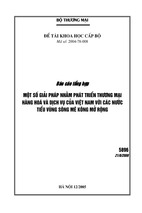Routing information 1058
Network Working Group
Request for Comments: 1058
C. Hedrick
Rutgers University
June 1988
Routing Information Protocol
Status of this Memo
This RFC describes an existing protocol for exchanging routing
information among gateways and other hosts. It is intended to be
used as a basis for developing gateway software for use in the
Internet community. Distribution of this memo is unlimited.
Network Communication Protocol Map. To order: http://www.javvin.com/map.html
Easy to use network sniffing tool: http://www.javvin.com/packet.html
Table of Contents
1. Introduction
1.1. Limitations of the protocol
1.2. Organization of this document
2. Distance Vector Algorithms
2.1. Dealing with changes in topology
2.2. Preventing instability
2.2.1. Split horizon
2.2.2. Triggered updates
3. Specifications for the protocol
3.1. Message formats
3.2. Addressing considerations
3.3. Timers
3.4. Input processing
3.4.1. Request
3.4.2. Response
3.5. Output Processing
3.6. Compatibility
4. Control functions
2
4
4
5
11
12
14
15
16
18
20
23
24
25
26
28
31
31
Overview
This memo is intended to do the following things:
- Document a protocol and algorithms that are currently in wide use for routing,
but which have never been formally documented.
- Specify some improvements in the algorithms which will improve stability of
the routes in large networks.
These improvements do not introduce any
incompatibility with existing implementations. They are to be incorporated into
Hedrick
[Page 1]
RFC 1058
Routing Information Protocol
June 1988
all implementations of this protocol.
- Suggest some optional features to allow greater
configurability and control. These features were developed
specifically to solve problems that have shown up in actual
use by the NSFnet community. However, they should have more
general utility.
The Routing Information Protocol (RIP) described here is loosely
based on the program "routed", distributed with the 4.3 Berkeley
Software Distribution. However, there are several other
implementations of what is supposed to be the same protocol.
Unfortunately, these various implementations disagree in various
details. The specifications here represent a combination of features
taken from various implementations. We believe that a program
designed according to this document will interoperate with routed,
and with all other implementations of RIP of which we are aware.
Note that this description adopts a different view than most existing
implementations about when metrics should be incremented. By making
a corresponding change in the metric used for a local network, we
have retained compatibility with other existing implementations. See
section 3.6 for details on this issue.
1. Introduction
This memo describes one protocol in a series of routing protocols
based on the Bellman-Ford (or distance vector) algorithm. This
algorithm has been used for routing computations in computer networks
since the early days of the ARPANET. The particular packet formats
and protocol described here are based on the program "routed", which
is included with the Berkeley distribution of Unix. It has become a
de facto standard for exchange of routing information among gateways
and hosts. It is implemented for this purpose by most commercial
vendors of IP gateways. Note, however, that many of these vendors
have their own protocols which are used among their own gateways.
This protocol is most useful as an "interior gateway protocol". In a
nationwide network such as the current Internet, it is very unlikely
that a single routing protocol will used for the whole network.
Rather, the network will be organized as a collection of "autonomous
systems". An autonomous system will in general be administered by a
single entity, or at least will have some reasonable degree of
technical and administrative control. Each autonomous system will
have its own routing technology. This may well be different for
different autonomous systems. The routing protocol used within an
autonomous system is referred to as an interior gateway protocol, or
"IGP". A separate protocol is used to interface among the autonomous
Hedrick
[Page 2]
RFC 1058
Routing Information Protocol
June 1988
systems. The earliest such protocol, still used in the Internet, is
"EGP" (exterior gateway protocol). Such protocols are now usually
referred to as inter-AS routing protocols. RIP was designed to work
with moderate-size networks using reasonably homogeneous technology.
Thus it is suitable as an IGP for many campuses and for regional
networks using serial lines whose speeds do not vary widely. It is
not intended for use in more complex environments. For more
information on the context into which RIP is expected to fit, see
Braden and Postel [3].
RIP is one of a class of algorithms known as "distance vector
algorithms". The earliest description of this class of algorithms
known to the author is in Ford and Fulkerson [6]. Because of this,
they are sometimes known as Ford-Fulkerson algorithms. The term
Bellman-Ford is also used. It comes from the fact that the
formulation is based on Bellman's equation, the basis of "dynamic
programming". (For a standard introduction to this area, see [1].)
The presentation in this document is closely based on [2]. This text
contains an introduction to the mathematics of routing algorithms.
It describes and justifies several variants of the algorithm
presented here, as well as a number of other related algorithms. The
basic algorithms described in this protocol were used in computer
routing as early as 1969 in the ARPANET. However, the specific
ancestry of this protocol is within the Xerox network protocols. The
PUP protocols (see [4]) used the Gateway Information Protocol to
exchange routing information. A somewhat updated version of this
protocol was adopted for the Xerox Network Systems (XNS)
architecture, with the name Routing Information Protocol. (See [7].)
Berkeley's routed is largely the same as the Routing Information
Protocol, with XNS addresses replaced by a more general address
format capable of handling IP and other types of address, and with
routing updates limited to one every 30 seconds. Because of this
similarity, the term Routing Information Protocol (or just RIP) is
used to refer to both the XNS protocol and the protocol used by
routed.
RIP is intended for use within the IP-based Internet. The Internet
is organized into a number of networks connected by gateways. The
networks may be either point-to-point links or more complex networks
such as Ethernet or the ARPANET. Hosts and gateways are presented
with IP datagrams addressed to some host. Routing is the method by
which the host or gateway decides where to send the datagram. It may
be able to send the datagram directly to the destination, if that
destination is on one of the networks that are directly connected to
the host or gateway. However, the interesting case is when the
destination is not directly reachable. In this case, the host or
gateway attempts to send the datagram to a gateway that is nearer the
destination. The goal of a routing protocol is very simple: It is to
Hedrick
[Page 3]
RFC 1058
Routing Information Protocol
June 1988
supply the information that is needed to do routing.
1.1. Limitations of the protocol
This protocol does not solve every possible routing problem. As
mentioned above, it is primary intended for use as an IGP, in
reasonably homogeneous networks of moderate size. In addition, the
following specific limitations should be mentioned:
- The protocol is limited to networks whose longest path
involves 15 hops. The designers believe that the basic
protocol design is inappropriate for larger networks. Note
that this statement of the limit assumes that a cost of 1
is used for each network. This is the way RIP is normally
configured. If the system administrator chooses to use
larger costs, the upper bound of 15 can easily become a
problem.
- The protocol depends upon "counting to infinity" to resolve
certain unusual situations. (This will be explained in the
next section.) If the system of networks has several
hundred networks, and a routing loop was formed involving
all of them, the resolution of the loop would require
either much time (if the frequency of routing updates were
limited) or bandwidth (if updates were sent whenever
changes were detected). Such a loop would consume a large
amount of network bandwidth before the loop was corrected.
We believe that in realistic cases, this will not be a
problem except on slow lines. Even then, the problem will
be fairly unusual, since various precautions are taken that
should prevent these problems in most cases.
- This protocol uses fixed "metrics" to compare alternative
routes. It is not appropriate for situations where routes
need to be chosen based on real-time parameters such a
measured delay, reliability, or load. The obvious
extensions to allow metrics of this type are likely to
introduce instabilities of a sort that the protocol is not
designed to handle.
1.2. Organization of this document
The main body of this document is organized into two parts, which
occupy the next two sections:
2
Hedrick
A conceptual development and justification of distance vector
algorithms in general.
[Page 4]
RFC 1058
3
Routing Information Protocol
June 1988
The actual protocol description.
Each of these two sections can largely stand on its own. Section 2
attempts to give an informal presentation of the mathematical
underpinnings of the algorithm. Note that the presentation follows a
"spiral" method. An initial, fairly simple algorithm is described.
Then refinements are added to it in successive sections. Section 3
is the actual protocol description. Except where specific references
are made to section 2, it should be possible to implement RIP
entirely from the specifications given in section 3.
2. Distance Vector Algorithms
Routing is the task of finding a path from a sender to a desired
destination. In the IP "Catenet model" this reduces primarily to a
matter of finding gateways between networks. As long as a message
remains on a single network or subnet, any routing problems are
solved by technology that is specific to the network. For example,
the Ethernet and the ARPANET each define a way in which any sender
can talk to any specified destination within that one network. IP
routing comes in primarily when messages must go from a sender on one
such network to a destination on a different one. In that case, the
message must pass through gateways connecting the networks. If the
networks are not adjacent, the message may pass through several
intervening networks, and the gateways connecting them. Once the
message gets to a gateway that is on the same network as the
destination, that network's own technology is used to get to the
destination.
Throughout this section, the term "network" is used generically to
cover a single broadcast network (e.g., an Ethernet), a point to
point line, or the ARPANET. The critical point is that a network is
treated as a single entity by IP. Either no routing is necessary (as
with a point to point line), or that routing is done in a manner that
is transparent to IP, allowing IP to treat the entire network as a
single fully-connected system (as with an Ethernet or the ARPANET).
Note that the term "network" is used in a somewhat different way in
discussions of IP addressing. A single IP network number may be
assigned to a collection of networks, with "subnet" addressing being
used to describe the individual networks. In effect, we are using
the term "network" here to refer to subnets in cases where subnet
addressing is in use.
A number of different approaches for finding routes between networks
are possible. One useful way of categorizing these approaches is on
the basis of the type of information the gateways need to exchange in
order to be able to find routes. Distance vector algorithms are
based on the exchange of only a small amount of information. Each
Hedrick
[Page 5]
RFC 1058
Routing Information Protocol
June 1988
entity (gateway or host) that participates in the routing protocol is
assumed to keep information about all of the destinations within the
system. Generally, information about all entities connected to one
network is summarized by a single entry, which describes the route to
all destinations on that network. This summarization is possible
because as far as IP is concerned, routing within a network is
invisible. Each entry in this routing database includes the next
gateway to which datagrams destined for the entity should be sent.
In addition, it includes a "metric" measuring the total distance to
the entity. Distance is a somewhat generalized concept, which may
cover the time delay in getting messages to the entity, the dollar
cost of sending messages to it, etc. Distance vector algorithms get
their name from the fact that it is possible to compute optimal
routes when the only information exchanged is the list of these
distances. Furthermore, information is only exchanged among entities
that are adjacent, that is, entities that share a common network.
Although routing is most commonly based on information about
networks, it is sometimes necessary to keep track of the routes to
individual hosts. The RIP protocol makes no formal distinction
between networks and hosts. It simply describes exchange of
information about destinations, which may be either networks or
hosts. (Note however, that it is possible for an implementor to
choose not to support host routes. See section 3.2.) In fact, the
mathematical developments are most conveniently thought of in terms
of routes from one host or gateway to another. When discussing the
algorithm in abstract terms, it is best to think of a routing entry
for a network as an abbreviation for routing entries for all of the
entities connected to that network. This sort of abbreviation makes
sense only because we think of networks as having no internal
structure that is visible at the IP level. Thus, we will generally
assign the same distance to every entity in a given network.
We said above that each entity keeps a routing database with one
entry for every possible destination in the system. An actual
implementation is likely to need to keep the following information
about each destination:
- address: in IP implementations of these algorithms, this
will be the IP address of the host or network.
- gateway: the first gateway along the route to the
destination.
- interface: the physical network which must be used to reach
the first gateway.
- metric: a number, indicating the distance to the
Hedrick
[Page 6]
RFC 1058
Routing Information Protocol
June 1988
destination.
- timer: the amount of time since the entry was last updated.
In addition, various flags and other internal information will
probably be included. This database is initialized with a
description of the entities that are directly connected to the
system. It is updated according to information received in messages
from neighboring gateways.
The most important information exchanged by the hosts and gateways is
that carried in update messages. Each entity that participates in
the routing scheme sends update messages that describe the routing
database as it currently exists in that entity. It is possible to
maintain optimal routes for the entire system by using only
information obtained from neighboring entities. The algorithm used
for that will be described in the next section.
As we mentioned above, the purpose of routing is to find a way to get
datagrams to their ultimate destinations. Distance vector algorithms
are based on a table giving the best route to every destination in
the system. Of course, in order to define which route is best, we
have to have some way of measuring goodness. This is referred to as
the "metric".
In simple networks, it is common to use a metric that simply counts
how many gateways a message must go through. In more complex
networks, a metric is chosen to represent the total amount of delay
that the message suffers, the cost of sending it, or some other
quantity which may be minimized. The main requirement is that it
must be possible to represent the metric as a sum of "costs" for
individual hops.
Formally, if it is possible to get from entity i to entity j directly
(i.e., without passing through another gateway between), then a cost,
d(i,j), is associated with the hop between i and j. In the normal
case where all entities on a given network are considered to be the
same, d(i,j) is the same for all destinations on a given network, and
represents the cost of using that network. To get the metric of a
complete route, one just adds up the costs of the individual hops
that make up the route. For the purposes of this memo, we assume
that the costs are positive integers.
Let D(i,j) represent the metric of the best route from entity i to
entity j. It should be defined for every pair of entities. d(i,j)
represents the costs of the individual steps. Formally, let d(i,j)
represent the cost of going directly from entity i to entity j. It
is infinite if i and j are not immediate neighbors. (Note that d(i,i)
Hedrick
[Page 7]
RFC 1058
Routing Information Protocol
June 1988
is infinite. That is, we don't consider there to be a direct
connection from a node to itself.) Since costs are additive, it is
easy to show that the best metric must be described by
D(i,i) = 0,
D(i,j) = min [d(i,k) + D(k,j)],
k
all i
otherwise
and that the best routes start by going from i to those neighbors k
for which d(i,k) + D(k,j) has the minimum value. (These things can
be shown by induction on the number of steps in the routes.) Note
that we can limit the second equation to k's that are immediate
neighbors of i. For the others, d(i,k) is infinite, so the term
involving them can never be the minimum.
It turns out that one can compute the metric by a simple algorithm
based on this. Entity i gets its neighbors k to send it their
estimates of their distances to the destination j. When i gets the
estimates from k, it adds d(i,k) to each of the numbers. This is
simply the cost of traversing the network between i and k. Now and
then i compares the values from all of its neighbors and picks the
smallest.
A proof is given in [2] that this algorithm will converge to the
correct estimates of D(i,j) in finite time in the absence of topology
changes. The authors make very few assumptions about the order in
which the entities send each other their information, or when the min
is recomputed. Basically, entities just can't stop sending updates
or recomputing metrics, and the networks can't delay messages
forever. (Crash of a routing entity is a topology change.) Also,
their proof does not make any assumptions about the initial estimates
of D(i,j), except that they must be non-negative. The fact that
these fairly weak assumptions are good enough is important. Because
we don't have to make assumptions about when updates are sent, it is
safe to run the algorithm asynchronously. That is, each entity can
send updates according to its own clock. Updates can be dropped by
the network, as long as they don't all get dropped. Because we don't
have to make assumptions about the starting condition, the algorithm
can handle changes. When the system changes, the routing algorithm
starts moving to a new equilibrium, using the old one as its starting
point. It is important that the algorithm will converge in finite
time no matter what the starting point. Otherwise certain kinds of
changes might lead to non-convergent behavior.
The statement of the algorithm given above (and the proof) assumes
that each entity keeps copies of the estimates that come from each of
its neighbors, and now and then does a min over all of the neighbors.
In fact real implementations don't necessarily do that. They simply
Hedrick
[Page 8]
RFC 1058
Routing Information Protocol
June 1988
remember the best metric seen so far, and the identity of the
neighbor that sent it. They replace this information whenever they
see a better (smaller) metric. This allows them to compute the
minimum incrementally, without having to store data from all of the
neighbors.
There is one other difference between the algorithm as described in
texts and those used in real protocols such as RIP: the description
above would have each entity include an entry for itself, showing a
distance of zero. In fact this is not generally done. Recall that
all entities on a network are normally summarized by a single entry
for the network. Consider the situation of a host or gateway G that
is connected to network A. C represents the cost of using network A
(usually a metric of one). (Recall that we are assuming that the
internal structure of a network is not visible to IP, and thus the
cost of going between any two entities on it is the same.) In
principle, G should get a message from every other entity H on
network A, showing a cost of 0 to get from that entity to itself. G
would then compute C + 0 as the distance to H. Rather than having G
look at all of these identical messages, it simply starts out by
making an entry for network A in its table, and assigning it a metric
of C. This entry for network A should be thought of as summarizing
the entries for all other entities on network A. The only entity on
A that can't be summarized by that common entry is G itself, since
the cost of going from G to G is 0, not C. But since we never need
those 0 entries, we can safely get along with just the single entry
for network A. Note one other implication of this strategy: because
we don't need to use the 0 entries for anything, hosts that do not
function as gateways don't need to send any update messages. Clearly
hosts that don't function as gateways (i.e., hosts that are connected
to only one network) can have no useful information to contribute
other than their own entry D(i,i) = 0. As they have only the one
interface, it is easy to see that a route to any other network
through them will simply go in that interface and then come right
back out it. Thus the cost of such a route will be greater than the
best cost by at least C. Since we don't need the 0 entries, nongateways need not participate in the routing protocol at all.
Let us summarize what a host or gateway G does. For each destination
in the system, G will keep a current estimate of the metric for that
destination (i.e., the total cost of getting to it) and the identity
of the neighboring gateway on whose data that metric is based. If
the destination is on a network that is directly connected to G, then
G simply uses an entry that shows the cost of using the network, and
the fact that no gateway is needed to get to the destination. It is
easy to show that once the computation has converged to the correct
metrics, the neighbor that is recorded by this technique is in fact
the first gateway on the path to the destination. (If there are
Hedrick
[Page 9]
RFC 1058
Routing Information Protocol
June 1988
several equally good paths, it is the first gateway on one of them.)
This combination of destination, metric, and gateway is typically
referred to as a route to the destination with that metric, using
that gateway.
The method so far only has a way to lower the metric, as the existing
metric is kept until a smaller one shows up. It is possible that the
initial estimate might be too low. Thus, there must be a way to
increase the metric. It turns out to be sufficient to use the
following rule: suppose the current route to a destination has metric
D and uses gateway G. If a new set of information arrived from some
source other than G, only update the route if the new metric is
better than D. But if a new set of information arrives from G
itself, always update D to the new value. It is easy to show that
with this rule, the incremental update process produces the same
routes as a calculation that remembers the latest information from
all the neighbors and does an explicit minimum. (Note that the
discussion so far assumes that the network configuration is static.
It does not allow for the possibility that a system might fail.)
To summarize, here is the basic distance vector algorithm as it has
been developed so far. (Note that this is not a statement of the RIP
protocol. There are several refinements still to be added.) The
following procedure is carried out by every entity that participates
in the routing protocol. This must include all of the gateways in
the system. Hosts that are not gateways may participate as well.
- Keep a table with an entry for every possible destination
in the system. The entry contains the distance D to the
destination, and the first gateway G on the route to that
network. Conceptually, there should be an entry for the
entity itself, with metric 0, but this is not actually
included.
- Periodically, send a routing update to every neighbor. The
update is a set of messages that contain all of the
information from the routing table. It contains an entry
for each destination, with the distance shown to that
destination.
- When a routing update arrives from a neighbor G', add the
cost associated with the network that is shared with G'.
(This should be the network over which the update arrived.)
Call the resulting distance D'. Compare the resulting
distances with the current routing table entries. If the
new distance D' for N is smaller than the existing value D,
adopt the new route. That is, change the table entry for N
to have metric D' and gateway G'. If G' is the gateway
Hedrick
[Page 10]
RFC 1058
Routing Information Protocol
June 1988
from which the existing route came, i.e., G' = G, then use
the new metric even if it is larger than the old one.
2.1. Dealing with changes in topology
The discussion above assumes that the topology of the network is
fixed. In practice, gateways and lines often fail and come back up.
To handle this possibility, we need to modify the algorithm slightly.
The theoretical version of the algorithm involved a minimum over all
immediate neighbors. If the topology changes, the set of neighbors
changes. Therefore, the next time the calculation is done, the
change will be reflected. However, as mentioned above, actual
implementations use an incremental version of the minimization. Only
the best route to any given destination is remembered. If the
gateway involved in that route should crash, or the network
connection to it break, the calculation might never reflect the
change. The algorithm as shown so far depends upon a gateway
notifying its neighbors if its metrics change. If the gateway
crashes, then it has no way of notifying neighbors of a change.
In order to handle problems of this kind, distance vector protocols
must make some provision for timing out routes. The details depend
upon the specific protocol. As an example, in RIP every gateway that
participates in routing sends an update message to all its neighbors
once every 30 seconds. Suppose the current route for network N uses
gateway G. If we don't hear from G for 180 seconds, we can assume
that either the gateway has crashed or the network connecting us to
it has become unusable. Thus, we mark the route as invalid. When we
hear from another neighbor that has a valid route to N, the valid
route will replace the invalid one. Note that we wait for 180
seconds before timing out a route even though we expect to hear from
each neighbor every 30 seconds. Unfortunately, messages are
occasionally lost by networks. Thus, it is probably not a good idea
to invalidate a route based on a single missed message.
As we will see below, it is useful to have a way to notify neighbors
that there currently isn't a valid route to some network. RIP, along
with several other protocols of this class, does this through a
normal update message, by marking that network as unreachable. A
specific metric value is chosen to indicate an unreachable
destination; that metric value is larger than the largest valid
metric that we expect to see. In the existing implementation of RIP,
16 is used. This value is normally referred to as "infinity", since
it is larger than the largest valid metric. 16 may look like a
surprisingly small number. It is chosen to be this small for reasons
that we will see shortly. In most implementations, the same
convention is used internally to flag a route as invalid.
Hedrick
[Page 11]
RFC 1058
Routing Information Protocol
June 1988
2.2. Preventing instability
The algorithm as presented up to this point will always allow a host
or gateway to calculate a correct routing table. However, that is
still not quite enough to make it useful in practice. The proofs
referred to above only show that the routing tables will converge to
the correct values in finite time. They do not guarantee that this
time will be small enough to be useful, nor do they say what will
happen to the metrics for networks that become inaccessible.
It is easy enough to extend the mathematics to handle routes becoming
inaccessible. The convention suggested above will do that. We
choose a large metric value to represent "infinity". This value must
be large enough that no real metric would ever get that large. For
the purposes of this example, we will use the value 16. Suppose a
network becomes inaccessible. All of the immediately neighboring
gateways time out and set the metric for that network to 16. For
purposes of analysis, we can assume that all the neighboring gateways
have gotten a new piece of hardware that connects them directly to
the vanished network, with a cost of 16. Since that is the only
connection to the vanished network, all the other gateways in the
system will converge to new routes that go through one of those
gateways. It is easy to see that once convergence has happened, all
the gateways will have metrics of at least 16 for the vanished
network. Gateways one hop away from the original neighbors would end
up with metrics of at least 17; gateways two hops away would end up
with at least 18, etc. As these metrics are larger than the maximum
metric value, they are all set to 16. It is obvious that the system
will now converge to a metric of 16 for the vanished network at all
gateways.
Unfortunately, the question of how long convergence will take is not
amenable to quite so simple an answer. Before going any further, it
will be useful to look at an example (taken from [2]). Note, by the
way, that what we are about to show will not happen with a correct
implementation of RIP. We are trying to show why certain features
are needed. Note that the letters correspond to gateways, and the
lines to networks.
A-----B
\
/ \
\ / |
C /
all networks have cost 1, except
| /
for the direct link from C to D, which
|/
has cost 10
D
|<=== target network
Hedrick
[Page 12]
RFC 1058
Routing Information Protocol
June 1988
Each gateway will have a table showing a route to each network.
However, for purposes of this illustration, we show only the routes
from each gateway to the network marked at the bottom of the diagram.
D:
B:
C:
A:
directly connected,
route via D, metric
route via B, metric
route via B, metric
metric 1
2
3
3
Now suppose that the link from B to D fails. The routes should now
adjust to use the link from C to D. Unfortunately, it will take a
while for this to this to happen. The routing changes start when B
notices that the route to D is no longer usable. For simplicity, the
chart below assumes that all gateways send updates at the same time.
The chart shows the metric for the target network, as it appears in
the routing table at each gateway.
time ------>
D:
B:
C:
A:
dir, 1
unreach
B,
3
B,
3
dir,
C,
A,
C,
1
4
4
4
dir,
C,
A,
C,
1
5
5
5
dir,
C,
A,
C,
1
6
6
6
...
dir, 1
C, 11
A, 11
C, 11
dir, 1
C, 12
D, 11
C, 12
dir = directly connected
unreach = unreachable
Here's the problem: B is able to get rid of its failed route using a
timeout mechanism. But vestiges of that route persist in the system
for a long time. Initially, A and C still think they can get to D
via B. So, they keep sending updates listing metrics of 3. In the
next iteration, B will then claim that it can get to D via either A
or C. Of course, it can't. The routes being claimed by A and C are
now gone, but they have no way of knowing that yet. And even when
they discover that their routes via B have gone away, they each think
there is a route available via the other. Eventually the system
converges, as all the mathematics claims it must. But it can take
some time to do so. The worst case is when a network becomes
completely inaccessible from some part of the system. In that case,
the metrics may increase slowly in a pattern like the one above until
they finally reach infinity. For this reason, the problem is called
"counting to infinity".
You should now see why "infinity" is chosen to be as small as
possible. If a network becomes completely inaccessible, we want
counting to infinity to be stopped as soon as possible. Infinity
must be large enough that no real route is that big. But it
Hedrick
[Page 13]
RFC 1058
Routing Information Protocol
June 1988
shouldn't be any bigger than required. Thus the choice of infinity
is a tradeoff between network size and speed of convergence in case
counting to infinity happens. The designers of RIP believed that the
protocol was unlikely to be practical for networks with a diameter
larger than 15.
There are several things that can be done to prevent problems like
this. The ones used by RIP are called "split horizon with poisoned
reverse", and "triggered updates".
2.2.1. Split horizon
Note that some of the problem above is caused by the fact that A and
C are engaged in a pattern of mutual deception. Each claims to be
able to get to D via the other. This can be prevented by being a bit
more careful about where information is sent. In particular, it is
never useful to claim reachability for a destination network to the
neighbor(s) from which the route was learned. "Split horizon" is a
scheme for avoiding problems caused by including routes in updates
sent to the gateway from which they were learned. The "simple split
horizon" scheme omits routes learned from one neighbor in updates
sent to that neighbor. "Split horizon with poisoned reverse"
includes such routes in updates, but sets their metrics to infinity.
If A thinks it can get to D via C, its messages to C should indicate
that D is unreachable. If the route through C is real, then C either
has a direct connection to D, or a connection through some other
gateway. C's route can't possibly go back to A, since that forms a
loop. By telling C that D is unreachable, A simply guards against
the possibility that C might get confused and believe that there is a
route through A. This is obvious for a point to point line. But
consider the possibility that A and C are connected by a broadcast
network such as an Ethernet, and there are other gateways on that
network. If A has a route through C, it should indicate that D is
unreachable when talking to any other gateway on that network. The
other gateways on the network can get to C themselves. They would
never need to get to C via A. If A's best route is really through C,
no other gateway on that network needs to know that A can reach D.
This is fortunate, because it means that the same update message that
is used for C can be used for all other gateways on the same network.
Thus, update messages can be sent by broadcast.
In general, split horizon with poisoned reverse is safer than simple
split horizon. If two gateways have routes pointing at each other,
advertising reverse routes with a metric of 16 will break the loop
immediately. If the reverse routes are simply not advertised, the
erroneous routes will have to be eliminated by waiting for a timeout.
However, poisoned reverse does have a disadvantage: it increases the
Hedrick
[Page 14]
RFC 1058
Routing Information Protocol
June 1988
size of the routing messages. Consider the case of a campus backbone
connecting a number of different buildings. In each building, there
is a gateway connecting the backbone to a local network. Consider
what routing updates those gateways should broadcast on the backbone
network. All that the rest of the network really needs to know about
each gateway is what local networks it is connected to. Using simple
split horizon, only those routes would appear in update messages sent
by the gateway to the backbone network. If split horizon with
poisoned reverse is used, the gateway must mention all routes that it
learns from the backbone, with metrics of 16. If the system is
large, this can result in a large update message, almost all of whose
entries indicate unreachable networks.
In a static sense, advertising reverse routes with a metric of 16
provides no additional information. If there are many gateways on
one broadcast network, these extra entries can use significant
bandwidth. The reason they are there is to improve dynamic behavior.
When topology changes, mentioning routes that should not go through
the gateway as well as those that should can speed up convergence.
However, in some situations, network managers may prefer to accept
somewhat slower convergence in order to minimize routing overhead.
Thus implementors may at their option implement simple split horizon
rather than split horizon with poisoned reverse, or they may provide
a configuration option that allows the network manager to choose
which behavior to use. It is also permissible to implement hybrid
schemes that advertise some reverse routes with a metric of 16 and
omit others. An example of such a scheme would be to use a metric of
16 for reverse routes for a certain period of time after routing
changes involving them, and thereafter omitting them from updates.
2.2.2. Triggered updates
Split horizon with poisoned reverse will prevent any routing loops
that involve only two gateways. However, it is still possible to end
up with patterns in which three gateways are engaged in mutual
deception. For example, A may believe it has a route through B, B
through C, and C through A. Split horizon cannot stop such a loop.
This loop will only be resolved when the metric reaches infinity and
the network involved is then declared unreachable. Triggered updates
are an attempt to speed up this convergence. To get triggered
updates, we simply add a rule that whenever a gateway changes the
metric for a route, it is required to send update messages almost
immediately, even if it is not yet time for one of the regular update
message. (The timing details will differ from protocol to protocol.
Some distance vector protocols, including RIP, specify a small time
delay, in order to avoid having triggered updates generate excessive
network traffic.) Note how this combines with the rules for
computing new metrics. Suppose a gateway's route to destination N
Hedrick
[Page 15]
RFC 1058
Routing Information Protocol
June 1988
goes through gateway G. If an update arrives from G itself, the
receiving gateway is required to believe the new information, whether
the new metric is higher or lower than the old one. If the result is
a change in metric, then the receiving gateway will send triggered
updates to all the hosts and gateways directly connected to it. They
in turn may each send updates to their neighbors. The result is a
cascade of triggered updates. It is easy to show which gateways and
hosts are involved in the cascade. Suppose a gateway G times out a
route to destination N. G will send triggered updates to all of its
neighbors. However, the only neighbors who will believe the new
information are those whose routes for N go through G. The other
gateways and hosts will see this as information about a new route
that is worse than the one they are already using, and ignore it.
The neighbors whose routes go through G will update their metrics and
send triggered updates to all of their neighbors. Again, only those
neighbors whose routes go through them will pay attention. Thus, the
triggered updates will propagate backwards along all paths leading to
gateway G, updating the metrics to infinity. This propagation will
stop as soon as it reaches a portion of the network whose route to
destination N takes some other path.
If the system could be made to sit still while the cascade of
triggered updates happens, it would be possible to prove that
counting to infinity will never happen. Bad routes would always be
removed immediately, and so no routing loops could form.
Unfortunately, things are not so nice. While the triggered updates
are being sent, regular updates may be happening at the same time.
Gateways that haven't received the triggered update yet will still be
sending out information based on the route that no longer exists. It
is possible that after the triggered update has gone through a
gateway, it might receive a normal update from one of these gateways
that hasn't yet gotten the word. This could reestablish an orphaned
remnant of the faulty route. If triggered updates happen quickly
enough, this is very unlikely. However, counting to infinity is
still possible.
3. Specifications for the protocol
RIP is intended to allow hosts and gateways to exchange information
for computing routes through an IP-based network. RIP is a distance
vector protocol. Thus, it has the general features described in
section 2. RIP may be implemented by both hosts and gateways. As in
most IP documentation, the term "host" will be used here to cover
either. RIP is used to convey information about routes to
"destinations", which may be individual hosts, networks, or a special
destination used to convey a default route.
Hedrick
[Page 16]
RFC 1058
Routing Information Protocol
June 1988
Any host that uses RIP is assumed to have interfaces to one or more
networks. These are referred to as its "directly-connected
networks". The protocol relies on access to certain information
about each of these networks. The most important is its metric or
"cost". The metric of a network is an integer between 1 and 15
inclusive. It is set in some manner not specified in this protocol.
Most existing implementations always use a metric of 1. New
implementations should allow the system administrator to set the cost
of each network. In addition to the cost, each network will have an
IP network number and a subnet mask associated with it. These are to
be set by the system administrator in a manner not specified in this
protocol.
Note that the rules specified in section 3.2 assume that there is a
single subnet mask applying to each IP network, and that only the
subnet masks for directly-connected networks are known. There may be
systems that use different subnet masks for different subnets within
a single network. There may also be instances where it is desirable
for a system to know the subnets masks of distant networks. However,
such situations will require modifications of the rules which govern
the spread of subnet information. Such modifications raise issues of
interoperability, and thus must be viewed as modifying the protocol.
Each host that implements RIP is assumed to have a routing table.
This table has one entry for every destination that is reachable
through the system described by RIP. Each entry contains at least
the following information:
- The IP address of the destination.
- A metric, which represents the total cost of getting a
datagram from the host to that destination. This metric is
the sum of the costs associated with the networks that
would be traversed in getting to the destination.
- The IP address of the next gateway along the path to the
destination. If the destination is on one of the
directly-connected networks, this item is not needed.
- A flag to indicate that information about the route has
changed recently. This will be referred to as the "route
change flag."
- Various timers associated with the route.
for more details on them.
See section 3.3
The entries for the directly-connected networks are set up by the
host, using information gathered by means not specified in this
Hedrick
[Page 17]
RFC 1058
Routing Information Protocol
June 1988
protocol. The metric for a directly-connected network is set to the
cost of that network. In existing RIP implementations, 1 is always
used for the cost. In that case, the RIP metric reduces to a simple
hop-count. More complex metrics may be used when it is desirable to
show preference for some networks over others, for example because of
differences in bandwidth or reliability.
Implementors may also choose to allow the system administrator to
enter additional routes. These would most likely be routes to hosts
or networks outside the scope of the routing system.
Entries for destinations other these initial ones are added and
updated by the algorithms described in the following sections.
In order for the protocol to provide complete information on routing,
every gateway in the system must participate in it. Hosts that are
not gateways need not participate, but many implementations make
provisions for them to listen to routing information in order to
allow them to maintain their routing tables.
3.1. Message formats
RIP is a UDP-based protocol. Each host that uses RIP has a routing
process that sends and receives datagrams on UDP port number 520.
All communications directed at another host's RIP processor are sent
to port 520. All routing update messages are sent from port 520.
Unsolicited routing update messages have both the source and
destination port equal to 520. Those sent in response to a request
are sent to the port from which the request came. Specific queries
and debugging requests may be sent from ports other than 520, but
they are directed to port 520 on the target machine.
There are provisions in the protocol to allow "silent" RIP processes.
A silent process is one that normally does not send out any messages.
However, it listens to messages sent by others. A silent RIP might
be used by hosts that do not act as gateways, but wish to listen to
routing updates in order to monitor local gateways and to keep their
internal routing tables up to date. (See [5] for a discussion of
various ways that hosts can keep track of network topology.) A
gateway that has lost contact with all but one of its networks might
choose to become silent, since it is effectively no longer a gateway.
However, this should not be done if there is any chance that
neighboring gateways might depend upon its messages to detect that
the failed network has come back into operation. (The 4BSD routed
program uses routing packets to monitor the operation of point-topoint links.)
Hedrick
[Page 18]
RFC 1058
Routing Information Protocol
June 1988
The packet format is shown in Figure 1.
Format of datagrams containing network information. Field sizes
are given in octets. Unless otherwise specified, fields contain
binary integers, in normal Internet order with the most-significant
octet first. Each tick mark represents one bit.
0
1
2
3 3
0 1 2 3 4 5 6 7 8 9 0 1 2 3 4 5 6 7 8 9 0 1 2 3 4 5 6 7 8 9 0 1
+-+-+-+-+-+-+-+-+-+-+-+-+-+-+-+-+-+-+-+-+-+-+-+-+-+-+-+-+-+-+-+-+
| command (1)
| version (1)
|
must be zero (2)
|
+---------------+---------------+-------------------------------+
| address family identifier (2) |
must be zero (2)
|
+-------------------------------+-------------------------------+
|
IP address (4)
|
+---------------------------------------------------------------+
|
must be zero (4)
|
+---------------------------------------------------------------+
|
must be zero (4)
|
+---------------------------------------------------------------+
|
metric (4)
|
+---------------------------------------------------------------+
.
.
.
The portion of the datagram from address family identifier through
metric may appear up to 25 times. IP address is the usual 4-octet
Internet address, in network order.
Figure 1.
Packet format
Every datagram contains a command, a version number, and possible
arguments. This document describes version 1 of the protocol.
Details of processing the version number are described in section
3.4. The command field is used to specify the purpose of this
datagram. Here is a summary of the commands implemented in version
1:
1 - request
A request for the responding system to send all or
part of its routing table.
2 - response
A message containing all or part of the sender's
routing table. This message may be sent in response
to a request or poll, or it may be an update message
generated by the sender.
3 - traceon
Obsolete.
ignored.
Hedrick
Messages containing this command are to be
[Page 19]
RFC 1058
Routing Information Protocol
June 1988
4 - traceoff
Obsolete.
ignored.
Messages containing this command are to be
5 - reserved
This value is used by Sun Microsystems for its own
purposes. If new commands are added in any
succeeding version, they should begin with 6.
Messages containing this command may safely be
ignored by implementations that do not choose to
respond to it.
For request and response, the rest of the datagram contains a list of
destinations, with information about each. Each entry in this list
contains a destination network or host, and the metric for it. The
packet format is intended to allow RIP to carry routing information
for several different protocols. Thus, each entry has an address
family identifier to indicate what type of address is specified in
that entry. This document only describes routing for Internet
networks. The address family identifier for IP is 2. None of the
RIP implementations available to the author implement any other type
of address. However, to allow for future development,
implementations are required to skip entries that specify address
families that are not supported by the implementation. (The size of
these entries will be the same as the size of an entry specifying an
IP address.) Processing of the message continues normally after any
unsupported entries are skipped. The IP address is the usual
Internet address, stored as 4 octets in network order. The metric
field must contain a value between 1 and 15 inclusive, specifying the
current metric for the destination, or the value 16, which indicates
that the destination is not reachable. Each route sent by a gateway
supercedes any previous route to the same destination from the same
gateway.
The maximum datagram size is 512 octets. This includes only the
portions of the datagram described above. It does not count the IP
or UDP headers. The commands that involve network information allow
information to be split across several datagrams. No special
provisions are needed for continuations, since correct results will
occur if the datagrams are processed individually.
3.2. Addressing considerations
As indicated in section 2, distance vector routing can be used to
describe routes to individual hosts or to networks. The RIP protocol
allows either of these possibilities. The destinations appearing in
request and response messages can be networks, hosts, or a special
code used to indicate a default address. In general, the kinds of
routes actually used will depend upon the routing strategy used for
the particular network. Many networks are set up so that routing
Hedrick
[Page 20]
- Xem thêm -

